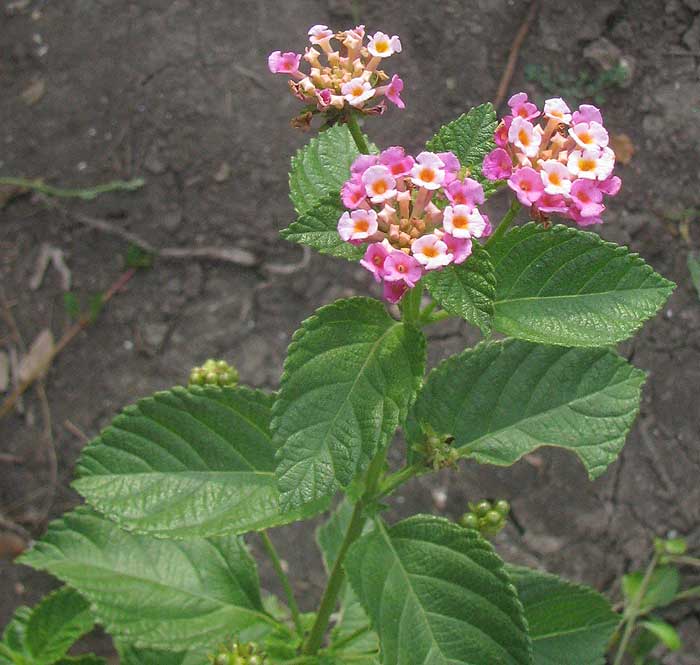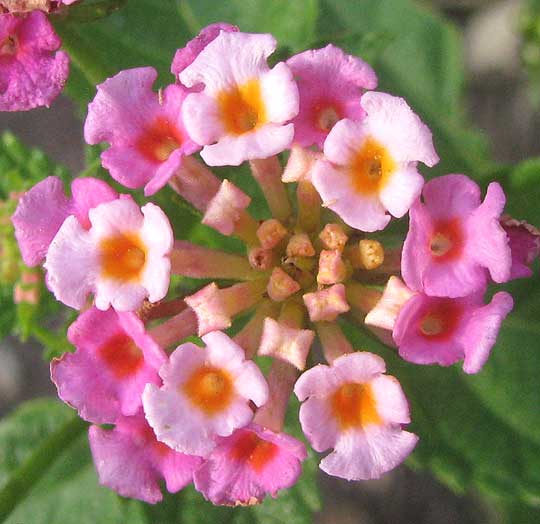Excerpts from Jim Conrad's
Naturalist Newsletter

from the July 7, 2013 Newsletter issued from the Frio Canyon Nature Education Center in the valley of the Dry Frio River in northern Uvalde County, southwestern Texas, on the southern border of the Edwards Plateau; elevation ~1750m (~5750 ft); N29.62°, W99.86°; USA
LANTANA
Two weeks ago in our June 23rd Newsletter we looked at a bush growing in the wild here, known as the Texas Lantana. It was the native Lantana urticoides, so pretty that sometimes it's planted as a garden ornamental. You can see the Texas Lantana at http://www.backyardnature.net/n/w/lantana.htm.
In that Newsletter we mentioned that there's a very similar, much more widely planted and often escaped species, usually known simply as Lantana or maybe Shrub Verbena. That species, LANTANA CAMARA, is now flowering beside the red cabin in the valley. Above you can see a sprig of the very bushy, chest-high, woody shrub.
Flowers in that picture display very different colors from the more orange and yellow Texas Lantana in our first picture, so you might wonder why I keep saying that they're so similar and hard to distinguish. The reason is that in both species the flowers change color as they age, plus cultivars have been developed from each species displaying flower-color variations that may overlap between the two species. With other plants nearly always we say that to distinguish look-alike, closely related species it's necessary to see details of flower and/or fruit, but here is one instance when leaves provide the best field marks.
In Shinners & Mahler's Flora of North Central Texas I read that the Texas Lantanas' leaves normally bear a few teeth 2-5mm high, while our present Lantana camera leaves have leaf margins with more numerous teeth that are only 0.5-1.5mm high. Our plant's margins bear teeth about one mm high, as is proper for Lantana camara. If you flip between the above two links you'll start to see the difference.
Lantana camara -- the one beside the cabin in the valley -- is native to Mexico, some of the Caribbean area and parts of South America, plus across the US southernmost states it's escaped into the wild. In Florida it's become a serious weed in citrus groves. I've not found it growing wild here, though. It's also established as a weed across the world in warmer countries.
Though eating numerous green berries of Lantana camara can be fatal, and skin contact with the leaves can cause dermatitis in some people, the plant also can be very useful. Its stalks can be used as fiber for making paper. Traditionally, Lantana camara leaves have been boiled and applied to body swellings and painful spots. Lantana alkaloids have been found to stimulate intestinal movements in experimental animals, and to lower blood pressure.
Having digested all that, you might enjoy simply feasting your eyes on a Lantana camara flower head glowing in morning sunlight, shown below:
